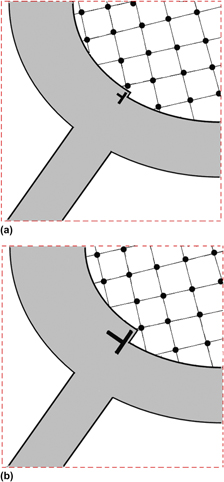Crossref Citations
This article has been cited by the following publications. This list is generated based on data provided by
Crossref.
Liu, Yingguang
Zhou, Jianqiu
and
Shen, Tongde
2012.
A combined dislocation–cohesive zone model for fracture in nanocrystalline materials.
Journal of Materials Research,
Vol. 27,
Issue. 4,
p.
694.
Yu, Min
Fang, Qihong
Feng, Hui
and
Liu, Youwen
2013.
Effect of special rotational deformation on dislocation emission from a semielliptical blunt crack tip in nanocrystalline solids.
Journal of Materials Research,
Vol. 28,
Issue. 6,
p.
798.
Hohenwarter, A.
and
Pippan, R.
2013.
Fracture of ECAP-deformed iron and the role of extrinsic toughening mechanisms.
Acta Materialia,
Vol. 61,
Issue. 8,
p.
2973.
Yu, Min
Fang, Qihong
Feng, Hui
and
Liu, Youwen
2014.
Effect of cooperative grain boundary sliding and migration on dislocation emitting from a semi-elliptical blunt crack tip in nanocrystalline solids.
Acta Mechanica,
Vol. 225,
Issue. 7,
p.
2005.
Wu, Yunbo
Zhou, Jianqiu
Liu, Hongxi
Pang, Xuming
Zhang, Shu
Wang, Ying
Wang, Lu
and
Dong, Shuhong
2014.
The effects of intergranular sliding on the fracture toughness of nanocrystalline materials with finest grains.
Journal of Materials Research,
Vol. 29,
Issue. 9,
p.
1086.
Yang, Sisheng
Yang, Zheng
and
Ling, Xiang
2014.
Fracture toughness estimation of ductile materials using a modified energy method of the small punch test.
Journal of Materials Research,
Vol. 29,
Issue. 15,
p.
1675.
Dong, Shuhong
Zhou, Jianqiu
Hui, David
and
Wang, Lu
2015.
Fracture toughness of nanocrystalline metal matrix composites reinforced by aligned carbon nanotubes.
Journal of Materials Research,
Vol. 30,
Issue. 21,
p.
3267.
Yu, M.
Fang, Q. H.
Feng, H.
and
Liu, Y. W.
2016.
Effect of special rotational deformation on dislocation emission from interface collinear crack tip in nanocrystalline bi-materials.
Acta Mechanica,
Vol. 227,
Issue. 7,
p.
2011.
Sahu, Jogindra Nath
and
Sasikumar, C.
2018.
Mechanical Properties of a Ni–Cr–Mo Steel Subjected to Room Temperature Carburizing Using Surface Mechano-Chemical Carburizing Treatment (SMCT).
Transactions of the Indian Institute of Metals,
Vol. 71,
Issue. 4,
p.
915.
Sob, P. B.
and
Pita, M.
2020.
Stochastic Effect of Fracture Toughness and Toughening Mechanism on Nanocrsyalline materials Size Variants Produced by Accumulative Roll-Bonding (ARB).
p.
46.





